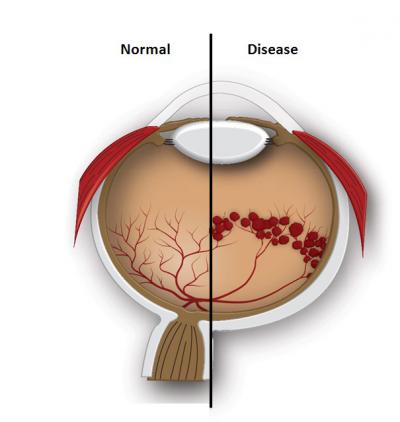
Cosmic Log : The spaceport Race
If you think the commercial space race is grueling, consider the hurdles that lie ahead for Spaceport America, a 16,600-acre stretch of ranchland that New Mexico hopes will become a world center for space tourism by 2010.
State officials will have to appoint a new spaceport director, hammer out a deal with the spaceship operator, win a license from federal regulators, get $200 million in financing in order and break ground for construction - all within the next year.
Not only that, they have to convince voters in two rural counties that the project is important enough to merit tens of millions of dollars in new taxes. Kelly O'Donnell, chairwoman and acting director of the New Mexico Spaceport Authority, admits that won't be easy.
"I feel very, very confident that we will get past this particular challenge, and that the many local governments that stand to benefit from the spaceport will share the burden - er, the honor - of funding this project with the state of New Mexico," she told attendees here today in Las Cruces, N.M., at the International Symposium for Personal Spaceflight.
New Mexico's Spaceport America, situated 40 miles north of Las Cruces, serves as a test case to see if the public will voluntarily accept the costs as well as the benefits that come with space travel. We know people will do it for baseball stadiums, but will they do it for launch pads?
About $140 million is already being put up by the state for building Spaceport America, but local governments will have to kick in the other $60 million, O'Donnell said. And that puts the burden - er, the honor - on three counties in the job-hungry southern part of the state: Dona Ana, Sierra and Otero counties.
Dona Ana voters narrowly approved new taxes in April, but at least one more county or city has to approve its own tax by the end of next year in order for the spaceport plan to move forward. Sierra County is planning a ballot next March or April, and Otero County is due to vote in November 2008, O'Donnell said. In the meantime, Dona Ana is trying to hold off on collecting the tax.
"A delay in those elections could be very bad for the spaceport," O'Donnell said.
That's just one of the hurdles that New Mexico has to negotiate:
Today, O'Donnell is asking the state legislature to approve a $1.9 million budget for the spaceport authority, which she said would represent a fourfold increase.
The authority is finishing up interviews for the new spaceport director this week, and should make its selection sometime early next month, she said.
New Mexico has "accelerated the process" of nailing down a long-term lease agreement with Virgin Galactic, which pledged to operate its SpaceShipTwo rocket plane from Spaceport America in a nonbinding pact last March. Some New Mexicans are rankled by the fact that Virgin Galactic still hasn't made a binding commitment - but the company's chief operating officer, Alex Tai, said a firm agreement is very close. "There's no way we're backing out," he told me.
Due to some snags that hung up an environmental assessment of the spaceport site, New Mexico has not yet completed its application for a launch site operator license from the Federal Aviation Administration, O'Donnell said. But she voiced confidence that the application would be finished by early next year. That timetable is important, because the FAA can take up to 180 days to approve a license - and O'Donnell said construction could not begin until that license is in hand.
The current plan calls for construction to start in September or October of next year, and for operations to begin in early 2010, O'Donnell said.
Those are a lot of hurdles to jump over, so it's no wonder that O'Donnell looked a bit high-strung as she ticked through her to-do list. But she voiced confidence that the spaceport authority will get through the list, even if some items are taking longer than officials expected two years ago. "Our record of meeting those challenges is very strong," she said.
Once the spaceport goes up, local officials hope more construction crews and tourist attractions will follow. The region is already being targeted for a potential new development called Hot Springs Motorplex, which will offer auto racing activities, a resort center and other goodies.
Research conducted for the state indicated that the spaceport alone could generate economic activity resulting in more than $750 million in revenue for New Mexico and more than 5,000 new jobs by 2020.
All this is music to the ears of local officials, and that could turn the tide when taxpayers render their verdict next year.
"Biggest thing on the agenda is to make our folks happy. ... What we're looking for is jobs," said Judd Nordyke, the mayor of Hatch (pop. 1,650) in Sierra County.
Lori Montgomery - the mayor of Truth or Consequences, another Sierra County town that's close to Spaceport America - said her constituents are already seeing the benefits of heightened economic development. Those benefits include a new hospital, a new 18-hole golf course and dozens of new houses.
"I've lived there 41 years, and I've never seen the type of interest that I've seen in the past couple of years," she said.
Having a spaceport nearby will shine the spotlight even more brightly on an area that's already a tourist magnet, said Rick Holdridge, chairman of the New Mexico Space Authority Community Advisory Committee.
"This is one of the most beautiful parts of the country here," he said, "and we want to show it off to the world."








 Sexual orientation seems to be wired into the brains of nematode worms, and tweaking this sexual wiring can result in worms attracted to members of the same sex.Biologists at the University of Utah have engineered worms that are attracted to worms of the same sex, bolstering evidence that sexual orientation may be hard-wired in the brain.
Sexual orientation seems to be wired into the brains of nematode worms, and tweaking this sexual wiring can result in worms attracted to members of the same sex.Biologists at the University of Utah have engineered worms that are attracted to worms of the same sex, bolstering evidence that sexual orientation may be hard-wired in the brain.
 It's easy to focus on the big stuff in Mac OS X 10.5 Leopard--Time Machine, Spaces, Stacks, Cover Flow, the changes to the Desktop's look-and-feel-but what interests me most about any major OS X update are the little things.
It's easy to focus on the big stuff in Mac OS X 10.5 Leopard--Time Machine, Spaces, Stacks, Cover Flow, the changes to the Desktop's look-and-feel-but what interests me most about any major OS X update are the little things. MIT Institute Professor Mildred Dresselhaus has been named winner of the 2008 Oliver E. Buckley Condensed Matter Prize from the American Physical Society.
MIT Institute Professor Mildred Dresselhaus has been named winner of the 2008 Oliver E. Buckley Condensed Matter Prize from the American Physical Society.


 Microsoft Corp. on Thursday said earnings for the fiscal first quarter jumped 23% amid strong revenue growth, solidly beating the forecasts of Wall Street analysts. ......profit rose 23 percent compared with last year, bolstered by brisk sales of the new "Halo 3" video game, Windows and Office.
Microsoft Corp. on Thursday said earnings for the fiscal first quarter jumped 23% amid strong revenue growth, solidly beating the forecasts of Wall Street analysts. ......profit rose 23 percent compared with last year, bolstered by brisk sales of the new "Halo 3" video game, Windows and Office. Intel Corp. on Thursday is expected to open a new factory to accelerate the production of chips using a 45-nanometer manufacturing process, slated to be used for its upcoming Penryn chips.
Intel Corp. on Thursday is expected to open a new factory to accelerate the production of chips using a 45-nanometer manufacturing process, slated to be used for its upcoming Penryn chips. Off-planet travel is an experience like no other, say those that have already travelled into orbit. And that's just what ticketed, still-to-fly customers for future suborbital treks want to hear.
Off-planet travel is an experience like no other, say those that have already travelled into orbit. And that's just what ticketed, still-to-fly customers for future suborbital treks want to hear.